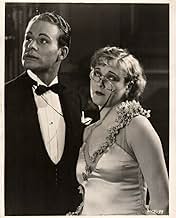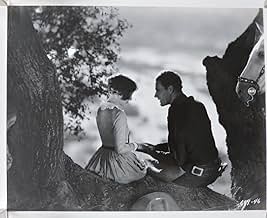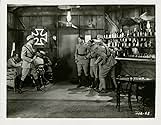Lane Chandler(1899-1972)
- Actor
American actor who had a brief flirtation with stardom before settling
into character roles and bit parts. Born in rural South Dakota
(according to government records, though some sources say Walsh County,
North Dakota) as Robert C. Oakes, the son of a horse rancher, he moved
with his family to Culbertson, Montana (not his birthplace as some
sources have it), where he grew up. The family moved again and he
graduated from high school in Helena. A brief attendance at Montana
Wesleyan College was interrupted by the offer of a job driving a tour
bus in Yellowstone National Park.
Drifting down to Los Angeles in the early 1920s, he got work as an auto mechanic, but his ranch-honed cowboy skills got him bit parts in pictures at Paramount when director John Waters offered him work in a series of Westerns. Paramount recognized possibilities in the tall, rugged, handsome cowboy and put him (with a new name, Lane Chandler) into leading roles, first in Westerns, then in contemporary films opposite some of the biggest star actresses of the time, Clara Bow, Greta Garbo, Betty Bronson, and Esther Ralston. As silent films were phased out, Chandler found his stock slipping at Paramount, which had begun to overtly favor Gary Cooper in his place. He began appearing in lower-budgeted Westerns, first in leads, then as second leads to stars such as John Wayne and Jack Hoxie. During this period he free-lanced at Big 4, Syndicate Pictures and Kent (see Willis Kent) Pictures, all a far cry from his days under contract with Adolph Zukor. Despite the relatively poor production values, several of his early talkies (The Mexican (1931) and Smashing Through (1931)) rise above similar fare in entertainment value. Unfortunately, Chandler was also forced to work on other lesser productions helmed by hack directors such as J.P. McGowan who cared more about quickly earning a paycheck than the product itself. His association with Kent ended in 1930s and Chandler drifted to another independent outfit called Empire Pictures which promised to produce 6 films, although only 2 were ultimately shot, the entertaining quickies The Lone Bandit (1935) and The Outlaw Tamer (1935). Now in his mid-30's Chandler found his career in irreversible decline and settled into supporting roles. A favorite of director Cecil B. DeMille, Chandler worked in many DeMille films, often in tiny bit parts, though he claimed these were his favorite parts. Eventually Chandler no longer commanded roles of any substance and he spent the remaining 35 years of his career in progressively smaller supporting parts, playing in hundreds of films, often uncredited. A stalwart of television Westerns of the 1950s, he was a familiar face to movie fans for nearly fifty years. An astute businessman with industrial and property holdings, he died in Los Angeles in 1971 at 73.
Drifting down to Los Angeles in the early 1920s, he got work as an auto mechanic, but his ranch-honed cowboy skills got him bit parts in pictures at Paramount when director John Waters offered him work in a series of Westerns. Paramount recognized possibilities in the tall, rugged, handsome cowboy and put him (with a new name, Lane Chandler) into leading roles, first in Westerns, then in contemporary films opposite some of the biggest star actresses of the time, Clara Bow, Greta Garbo, Betty Bronson, and Esther Ralston. As silent films were phased out, Chandler found his stock slipping at Paramount, which had begun to overtly favor Gary Cooper in his place. He began appearing in lower-budgeted Westerns, first in leads, then as second leads to stars such as John Wayne and Jack Hoxie. During this period he free-lanced at Big 4, Syndicate Pictures and Kent (see Willis Kent) Pictures, all a far cry from his days under contract with Adolph Zukor. Despite the relatively poor production values, several of his early talkies (The Mexican (1931) and Smashing Through (1931)) rise above similar fare in entertainment value. Unfortunately, Chandler was also forced to work on other lesser productions helmed by hack directors such as J.P. McGowan who cared more about quickly earning a paycheck than the product itself. His association with Kent ended in 1930s and Chandler drifted to another independent outfit called Empire Pictures which promised to produce 6 films, although only 2 were ultimately shot, the entertaining quickies The Lone Bandit (1935) and The Outlaw Tamer (1935). Now in his mid-30's Chandler found his career in irreversible decline and settled into supporting roles. A favorite of director Cecil B. DeMille, Chandler worked in many DeMille films, often in tiny bit parts, though he claimed these were his favorite parts. Eventually Chandler no longer commanded roles of any substance and he spent the remaining 35 years of his career in progressively smaller supporting parts, playing in hundreds of films, often uncredited. A stalwart of television Westerns of the 1950s, he was a familiar face to movie fans for nearly fifty years. An astute businessman with industrial and property holdings, he died in Los Angeles in 1971 at 73.






























